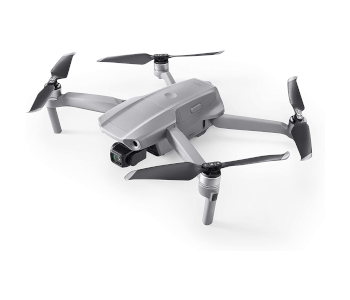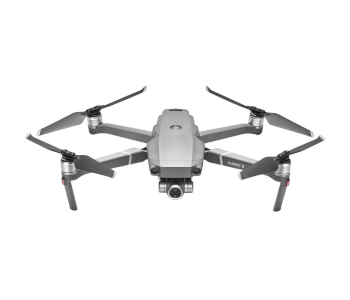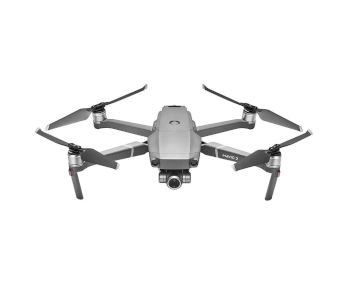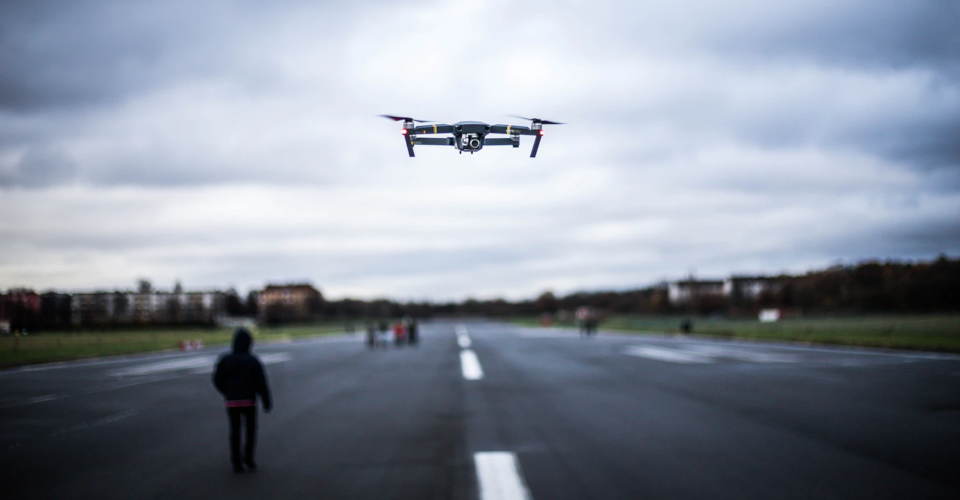DJI Mavic Air 2 vs. DJI Mavic 2 Pro and Mavic 2 Zoom
If you’ve been following news on the drone industry in the last couple of days, then you’ve probably heard that DJI has just recently released the upgraded version of one of their most popular drones – the Mavic Air 2. The latest attempt of DJI to stay on top of the game, the Mavic Air 2 boasts of a better camera, longer battery life, and an improved overall build compared to its predecessor.
To see just how good the Mavic Air 2 is, we’re pitting it against two of the best ultra-portable drones DJI has released – the Mavic 2 Pro and the Mavic 2 Zoom. How does it fare against drones that many still consider to be some of the best in the market?
Overview
Released less than 48 hours ago as of this writing, the Mavic Air 2 is the latest drone launched by DJI. A follow up to one of their best-selling drones ever, at continues to appeal to the mid-budget range market. Despite the fairly affordable price tag, the Mavic Air 2 has been equipped with premium-level features that should help it appeal both to casual and professional drone pilots.
The Mavic 2 drones were released in the tail-end of 2018. At the time, the two Mavic 2 variants were some of the most expensive ultra-portable drones. However, the price tags were fairly justified by features and technology that instantly made the Mavic 2 Pro and the Mavic 2 Zoom two of the best drones back then, making them compelling purchases for professional drone pilots. They also maintained the usual ultra-portable build of DJI’s Mavic line, although they were slightly larger and heavier.
Size and weight
| Parameter | Mavic Air 2 | Mavic 2 Pro | Mavic 2 Zoom |
|---|---|---|---|
| Weight | 570 grams | 907 grams | 905 grams |
| Size (Folded) | 180 x 97 x 84 mm | 214 x 91 x 84 mm | 214 x 91 x 84 mm |
| Size (Unfolded) | 183 x 253 x 77 mm | 322 x 242 x 84 mm | 322 x 242 x 84 mm |
When the Mavic 2 drones were launched, they were hailed for having an incredible amount of technology packed into an ultra-portable form factor. However, they were also undeniably larger and heavier than all the other Mavic drones. This wasn’t a huge turn-off for many people, as both the Mavic 2 Pro and Mavic 2 Zoom were incredibly handy drones that can fit in just about any standard bag.
The Mavic Air 2 weighs a measly 570 grams – only 140 grams heavier than the original Mavic Air and still lighter than the original Mavic Pro. Compared to the first Mavic Air, it’s also a little longer, wider, and thicker. This is hardly surprising considering the gap of features between the original Mavic Air and this upgraded version, as we shall see later.
Comparing the Mavic Air 2 to the Mavic 2 drones drives home just how much portable this newer drone is. It’s a lot shorter and narrower in both its folded and unfolded forms, making it much easier to carry around. Right now, the Mavic Air 2 is inferior only to the original Mavic Air and the Mavic Mini in terms of portability. In this aspect, it leaves both Mavic 2 drones in the dust.
Camera
| Parameter | Mavic Air 2 | Mavic 2 Pro | Mavic 2 Zoom |
|---|---|---|---|
| Sensor | 1/2” CMOS | 1” CMOS | 1/2.3” CMOS |
| Stills | 12 MP or 48 MP | 20 MP | 12 MP |
| Videos | 4K @ 60 fps | 4K @ 30 fps | 4K @ 30 fps |
| Slow motion | 1080p @ 240 fps | 1080p @ 120 fps | 1080p @ 120 fps |
| Max bitrate | 120 Mbps | 100 Mbps | 100 Mbps |
| Aperture | f/2.8 | f/2.8 – f/11 | f/2.8 (24mm) – f/3.8 (48 mm) |
| Field of view | 84° | 77° | 83° (24 mm); 48° (48 mm) |
| ISO range | 100-6400 (12 MP) 100-3200 (48 MP) 100-6400 (Video) | 100-12800 (20 MP) 100-6400 (Video) | 100-3200 (12 MP) 100-3200 (Video) |
| HDR mode? | Yes | Yes | Yes |
| AEB mode? | Yes | Yes | Yes |
| Color profile | D-Cinelike | Dlog-M (10 bit) | D-Cinelike |
| Shoot in RAW? | Yes | Yes | Yes |
DJI has been stepping up their camera game since they launched the Mavic 2 drones, and the Mavic Air 2 is no exception either. Just a quick rundown of the specs of all three drones reveals a lot of impressive details – they are all capable of recording 4K video, can record in slow motion, has both HDR and AEB modes, and can shoot in RAW format. Professional drone photographers will not be disappointed in any one of these three choices.
However, we need to pick apart this table of specs if we want to decide on a clear winner. In terms of sensor size, the Mavic 2 Pro’s 1-inch sensor is still the winner. However, the resolution of the photos and videos of the Mavic Air 2 puts it at the lead. The new 48-MP photo capability is a new feature as far as ultra-portable drones go, and the Mavic Air 2 is the only DJI drone aside from the Phantom 4 Pro V2.0 that can shoot 4K video at 60 fps.
The slow-motion of the Mavic Air 2 is even more impressive – it is the only drone that can shoot 1080p videos at a 240-fps framerate. All these are made possible by the upgraded 120 Mbps bitrate of the Mavic Air 2.

Taking photos and videos in low-light conditions is one area where the Mavic 2 Pro truly shines. With its adjustable aperture and wide ISO range, the Mavic 2 Pro is best equipped for challenging lighting scenarios. In fact, the fixed aperture of the Mavic Air 2 is one of its more disappointing characteristics. While its ISO range at 12 MP is wider than that of the Mavic 2 Zoom, shooting in 48 MP may not be optimal unless you have very good lighting conditions.
The Dlog-M color profile of the Mavic 2 Pro is one of its distinguishing features. This is one of the most extensive dynamic ranges in camera drones, allowing the Mavic 2 Pro to capture photos and videos with incredibly vibrant colors and smoother transitions between different contrast levels. This color profile also directly enhances the Mavic 2 Pro’s HDR mode to create better highlights in low-contrast environments.
Both the Mavic Air 2 and the Mavic 2 Zoom support the D-CInelike color profile. D-Cinelike also retains a greater amount of color information, giving photographers more control for color grading and post-processing. However, the Dlog simply looks more balanced, has better contrast retention, and offers a more expansive color profile.
At this point, it would be unfair not to mention the Mavic 2 Zoom’s distinguishing characteristic. The 24mm-48mm lens of the Mavic 2 Zoom allows for 2x optical zoom. When augmented with the 4x lossless digital zoom capability, this sets the Mavic 2 Zoom as being the ultra-portable drone with the most powerful zoom option. In the hands of a creative photographer, the Mavic 2 Zoom offers a lot of photography opportunities that are simply not available to the other two drones.
It goes without saying that all three drone cameras are supported by a three-axis mechanical gimbal. Through the years, DJI has developed and perfected gimbal technology and all three of these drones have benefitted from its impressive mechanical stabilization.
Declaring a “superior” camera drone from these three options is difficult because all of them have their pros. The high bitrate of the Mavic Air 2 makes it useful for capturing fast-moving subjects, the expansive color profile and ISO range of the Mavic 2 Pro allows it to capture vibrant photos even in low light conditions, and the Mavic 2 Zoom has zoom capabilities that put it at a class of its own.
Flight performance
| Parameter | Mavic Air 2 | Mavic 2 Pro | Mavic 2 Zoom |
|---|---|---|---|
| Max ground speed (S-mode) | 19 m/s | 20 m/s | 20 m/s |
| Max wind resistance | 8.5 to 10.5 m/s | 8 to 10.5 m/s | 8 to 10.5 m/s |
The later entries in the Mavic line have benefitted from the more efficient propeller designs and ESCs that have been developed during the time of the Mavic Pro Platinum. Along with more powerful motors, these developments have made the Mavic 2 drones the speediest Mavic drones back when they were launched.
The figures of the Mavic Air 2 are a notch lower than those of the Mavic 2 drones, but the difference is so small that it hardly matters. Despite the smaller form factor of the Mavic Air 2, it can keep up with both the Mavic 2 Pro and Mavic 2 Zoom in terms of speed and stability. These premium camera drones are all impressively fast and powerful.
Controller and companion app
| Parameter | Mavic Air 2 | Mavic 2 Pro | Mavic 2 Zoom |
|---|---|---|---|
| Integrated screen? | No | Yes, but sold separately | Yes, but sold separately |
| Transmission technology | OcuSync 2.0 | OcuSync 2.0 | OcuSync 2.0 |
| Video resolution | 1080p @ 30 fps | 1080p @ 30 fps | 1080p @ 30 fps |
| Range | 10 km | 8 km | 8 km |
The controllers of all three drones have been equipped with OcuSync 2.0, DJI’s latest transmission technology. This allows for real-time 1080p video streaming at 30 fps and an effective transmission range of 8 to 10 kilometers. There’s a slight difference in the range figures for the Mavic Air 2 and the Mavic 2 drones, but even the 8-kilometer transmission range of the Mavic 2 Pro and the Mavic 2 Zoom is already more than enough. The expected video latency is also the same for all devices.
The key difference between the different controllers is their respective designs. Both the Mavic 2 Pro and the Mavic 2 Zoom came with old-fashioned remote controllers with a basic LCD screen and a phone cradle. A Smart Controller with an integrated full-color 1080p touchscreen was sold by DJI for the Mavic 2 drones, but you also had to spend close to $700 to get these.

The remote controller of the Mavic Air 2 has been redesigned to be the sleekest and most minimalist of all drone remote controllers we have seen so far. It has no LCD screen, opting for a clean interface composed of the analog sticks, a slider to switch between flight modes, and four other physical buttons. It also has no physical antennas. It still needs a smartphone to act as a screen but will need the new DJI Fly app.
It’s worth mentioning the new and improved DJI Fly app at this point. More than just an app to control the drone, DJI Fly offers in-app editing tools to quickly adjust the shots you have taken and publish them instantly.
The lack of visible antennas makes it possible to have the phone mount on the Mavic Air 2 controller located at a safer spot at the top. The spring-loaded mount of the Mavic Air 2 controller also feels more secure and certainly more versatile compared to the hinged mount of the standard Mavic 2 controllers.
The controller of the Mavic 2 Air is slightly larger than those for the Mavic 2, but it still has removable analog sticks to keep them from getting damaged during transport. Just for the better phone mount and the sleeker design, we’re a little partial to the remote controller of the Mavic Air 2.
Flight time
| Parameter | Mavic Air 2 | Mavic 2 Pro | Mavic 2 Zoom |
|---|---|---|---|
| Max flight time | 34 minutes | 31 minutes | 31 minutes |
| Capacity | 3850 mAh | 3850 mAh | 3850 mAh |
The battery of the Mavic Air 2 has the exact capacity as those found in the Mavic 2 Pro and Mavic 2 Zoom. The 31-minute flight time of the Mavic 2 drones was already pretty impressive when it was launched, but the Mavic 2 Air ekes out a few more minutes on account of its lighter weight. These few minutes matter, especially if you’re using the drone to do a commercial gig.
Safety features
| Parameter | Mavic Air 2 | Mavic 2 Pro | Mavic 2 Zoom |
|---|---|---|---|
| Obstacle avoidance | Forward, backward, downward (APAS 3.0) | Omnidirectional | Omnidirectional |
The Mavic 2 Pro and Mavic 2 Zoom made waves when it came out with an omnidirectional obstacle avoidance system. This remains one of the best and most comprehensive obstacle detection technologies, even until today.
The scope of the obstacle detection sensors of the Mavic Air 2 may be more limited, but it has also been equipped with the Advanced Pilot Assistance Systems (APAS) 3.0 technology. This aids obstacle avoidance by using 3D mapping technology to allows for automatic flight planning. The same technology is used by the Mavic Air 2 to enhance its subject tracking feature and to keep the drone safe when flying autonomously under any of its Intelligent Flight Modes.
The Mavic Air 2 is also the first consumer drone from DJI to come with AirSense technology. This is a system that allows the drone to receive ADS-B signals from nearby planes and helicopters. The location of these other aircraft will then be made visible to the drone pilot, allowing them to execute evasive maneuvers if necessary.
Right now, the obstacle avoidance system of the Mavic Air 2 seems to be the “smartest” that DJI has ever developed. This fact, plus the integration of AirSense technology, make the Mavic Air 2 one of the best drones in terms of situational awareness.
Flight Modes
| Parameter | Mavic Air 2 | Mavic 2 Pro | Mavic 2 Zoom |
|---|---|---|---|
| Intelligent flight modes |
|
|
|
Like the Mavic 2 drones, the Mavic Air 2 maintains a lean list of flight modes that should be enough to serve any of your flight needs. You can freely fly the drone around in either Normal or Sport mode, set it on a defined course, or define waypoints for the drone to automatically follow.
There’s nothing in the list of flight modes of any of the drones that stand out. This probably means that these are all the flight modes we will ever need. However, it’s in the arena of camera modes where the competition is happening.
Camera modes
| Parameter | Mavic Air 2 | Mavic 2 Pro | Mavic 2 Zoom |
|---|---|---|---|
| Camera modes |
|
|
|
All three drones come with the usual assortment of Rocket, Dronie, Boomerang, Asteroid, and other similar camera modes. These are par for the course now, even for much cheaper camera drones.
Instead, let’s focus on the more advanced camera modes that each camera offers. The Mavic 2 Pro comes with DJI’s upgraded Active Track 2.0, a smarter “Follow Me” feature that uses AI technology to predict the trajectory of a moving subject. The same camera mode can be found on the Mavic 2 Zoom.
The Mavic 2 Zoom has a slightly better list of camera modes on account of its unique zoom capabilities. The Dolly Zoom mode simulates the cinematic effect made popular by the Alfred Hitchcock movies where the camera maintains its focus on the subject as the drone flies away, creating a disconcerting but very cool shot.

The Super Resolution mode of the Mavic 2 Zoom creates a composite shot using its zoom function, creating a photo that has an effective resolution of 48 MP. This has become one of the most popular and often-used features of the Mavic 2 Zoom.
Impressive as the camera modes of the Mavic 2 drones were, we can safely say that the Mavic Air 2 handily beats both of them. Where shall we start? The Mavic Air 2 greatly enhances the older drones’ Hyperlapse mode with the ability to replicate the same effect but in stunning 8K resolution. The camera’s HDR function can overlap with other camera modes. Most notably, we expect to see lots of uses of the Mavic Air 2 HDR Panorama capability.
The FocusTrack is one of this newest drone’s flagship features. This is an umbrella term for three key camera modes: ActiveTrack 3.0, Point of Interest 3.0, and Spotlight 2.0. These are all upgraded versions of camera modes found in previous DJI drones.
By using the new 3D mapping capabilities, ActiveTrack 3.0 has improved both its subject tracking and obstacle avoidance functions and retains the ability to predict movement trajectory. Point of Interest 3.0 boasts of improved surface recognition to better track subjects in dynamic environments.
Price
One of the more surprising things about the Mavic Air 2 is that it costs the same as the Mavic Air back when it was launched two years ago. The original Mavic Air went on to be one of the best-selling drones ever to be made by DJI. Considering how much the Mavic Air 2 has been upgraded from its predecessor and the fact that it’s being sold at the same price, it looks like DJI has another hit on their hands.
As a side note, the original Mavic Air is now available at a discounted price of $599.
Both the Mavic 2 Pro and Mavic 2 Zoom have dropped in price since they were launched more than a year ago, but they are still pretty expensive. The $250 price difference between the Mavic 2 Pro and Mavic 2 Zoom has also been retained.
The Mavic 2 drones were considered some of the best ultra-portable drones when they were launched. Despite the hefty price tags, their premium features, and technologies that weren’t found in other ultra-portable drones were more than enough to make them compelling options, especially for professional drone photographers. The Mavic 2 Pro, in particular, had been considered the best ultra-portable camera drone for a very long time.
However, we also can’t help but point out that the Mavic 2 Pro costs twice as much as the Mavic Air 2. Is the Mavic 2 Pro’s Hasselblad camera enough to justify this large price gap? Time will tell if the Mavic 2 drones remain competitive or if DJI has essentially cannibalized their own top-of-the-line drones.
Which drone should you get?
It’s tough to make a pick, as all three drones have very good qualities. The Mavic 2 Pro has the 1-inch CMOS sensor and wide dynamic range, the Mavic 2 Zoom has the powerful zoom capabilities, while the Mavic Air 2 has the best slow-motion feature, higher bitrate, and upgraded versions of several camera modes. Each one of these drones is good enough for professional drone photography work.
Let’s get real here – ultimately, what matters is the price. The difference in features between the Mavic Air 2 and the Mavic 2 drones will probably not be enough to justify the price of the Mavic 2 drones for the average photographer. There’s also the fact that the Mavic Air 2 can be considered superior in some aspects – framerate, flight time, and tracking features, just to name a few.
With the same price tag that the original Mavic Air did when it was launched, we anticipate the Mavic Air 2 to attain at least the same heights of success as its predecessor. This is a perfect drone for those who are looking to get into the hobby with a high-quality drone and without spending too much.

